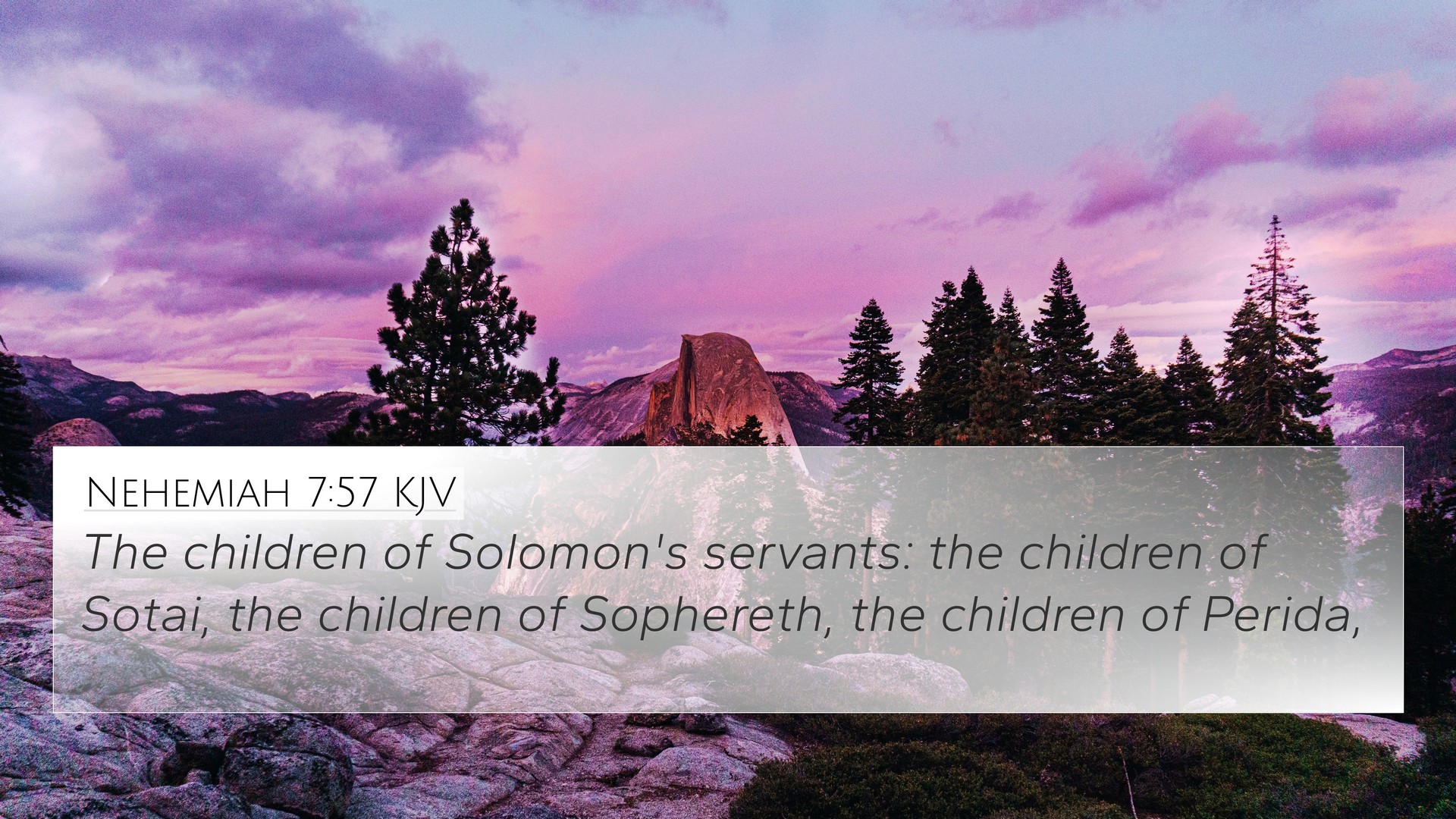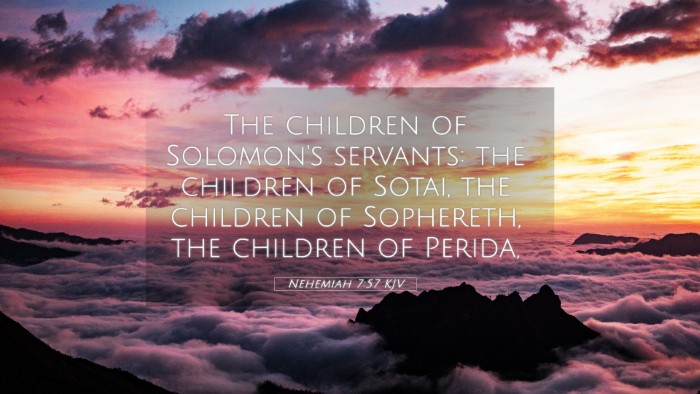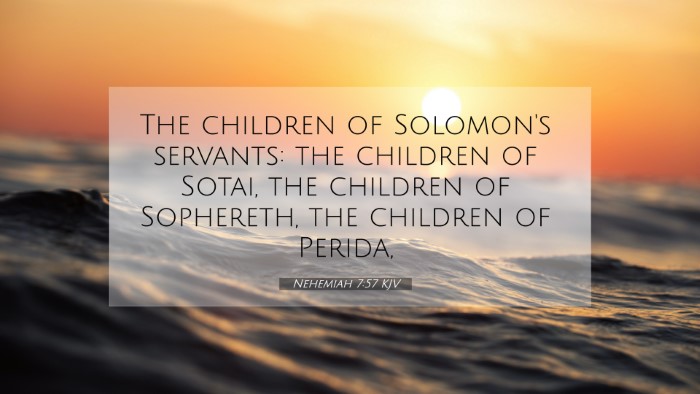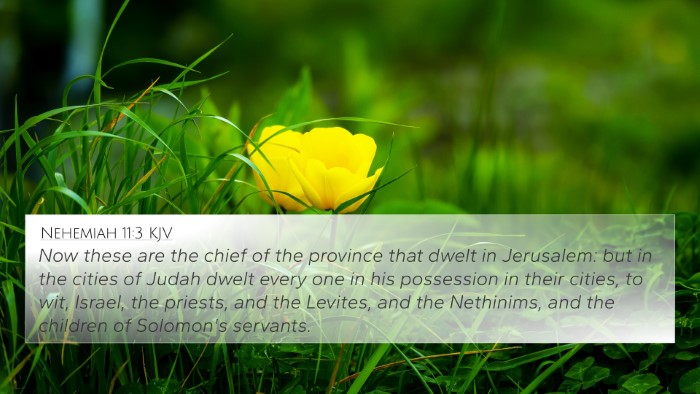Understanding Nehemiah 7:57
Nehemiah 7:57 states: “The children of Solomon’s servants were three hundred ninety and two.” This verse is part of a broader list that includes the names and numbers of returning exiles and their descendants, emphasizing the restoration of Jerusalem and the importance of lineage in Jewish tradition.
Summary of Commentary Insights
Commentaries from notable scholars such as Matthew Henry, Albert Barnes, and Adam Clarke provide rich insights into this verse. Below is a synthesis of their interpretations:
- Historical Context: This verse provides a catalog of those who returned from Babylonian captivity. The returning exiles aspired to restore their identity and heritage in Jerusalem.
- Lineage Importance: Emphasizing the lineage, especially of Solomon’s servants, highlights the historical continuity of the Jewish people and their connection to their forefathers.
- Divine Providence: The precise number mentioned reflects God’s providential hand in their return and re-establishment, echoing His promises of restoration.
- Covenantal Significance: These details illustrate the fulfillment of God’s covenant with Israel. Each returning group signifies His commitment to redeem His people.
- Community Formation: This enumeration of people illustrates the formation of the Jewish community in Jerusalem, which was vital for worship and religious life post-exile.
- Typological Interpretation: Some scholars interpret Solomon's servants typologically, relating them to Jesus, who serves as a “son of David” in the New Testament contexts.
- Connection to Earlier Texts: This verse reflects connections to earlier texts in the Old Testament, such as 1 Chronicles, which also emphasizes genealogies as a means of understanding covenantal history.
Bible Verse Cross-References
This verse can be cross-referenced with several important biblical passages that enhance its understanding:
- Ezra 2:55-58: A list of temple servants and their descendants.
- 1 Chronicles 9:2: Examination of those who returned to dwell in Jerusalem.
- 2 Samuel 5:14: Reference to David's lineage, connecting back to the covenant with Solomon.
- Isaiah 44:28: Prophetic assurance that Cyrus would facilitate the return of Jerusalem's children.
- Nehemiah 11:3: Lists the leaders and inhabitants of Jerusalem along with their roles.
- Ezra 1:1-4: God stirring Cyrus's heart to implement the return of exiles.
- Galatians 3:29: New Testament perspective on being heirs according to promise, connecting both Old and New Testament themes.
- Matthew 1:12-16: Genealogy of Jesus, connecting to the descendants of Solomon.
- Hebrews 11:10: Looking forward to the city whose architect and builder is God, highlighting hope and restoration.
Tools for Bible Cross-Referencing
To engage in deeper study and cross-referencing of biblical texts, consider using the following resources:
- Bible concordance: A tool to find the occurrences of specific words and phrases in the Bible.
- Bible cross-reference guide: resources that provide links between related passages for comparative study.
- Cross-reference Bible study: Methods to examine correlations between verses for thematic studies.
- Bible reference resources: General tools and guides available for facilitating understanding of scripture.
- Comprehensive Bible cross-reference materials: In-depth resources for those seeking extensive cross-referencing.
Conclusion
In conclusion, Nehemiah 7:57 serves not only as a historical record but also as a theological affirmation of God’s faithfulness to His people. Understanding this verse within its broader biblical context, including the cross-references listed, reveals rich themes of covenant, restoration, and community that are critical for deeper biblical study and application.




